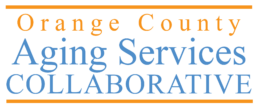2019 Orange County Report on Older Adults
Contents
Executive Summary
Over 450,000 older adults (aged 65 and older) account for 14.3% of Orange County’s population.1 By 2045, this number is projected to increase to 17.3%.2 As more adults reach retirement, they will face a new set of economic, social, health, and lifestyle challenges associated with aging. Currently, Orange County is not in a position to provide adequate support and care to meet the needs and challenges of this inevitably growing aging population.
This report is intended to educate community-based organizations, city and county government representatives, funders and the general public on the most pressing needs of Orange County’s aging population. It is the inaugural effort of local nonprofit organizations, government, and funders to gather and analyze the county’s data on older adults, address areas of need/concern, identify opportunities and next steps for our community to collectively support the growing senior population.
The report focuses on seven key areas as follows:
Data was gathered from a variety of existing sources and compiled from surveys conducted through OCASC. All sources have been noted and referenced. It is clear that there is insufficient data regarding the older adult population in our county.
Data indicates that more education, outreach and awareness of existing programs is needed. Expanding services and support programs are vital steps in addressing the unmet needs of our seniors.
OCSPA recommends the following:
- Create a county-wide database network, a Community Information Exchange (CIE) database, or a system equivalent to CIE, to support innovative ways of bridging information bi-directionally between health systems and community-based organizations.
- Develop a mechanism to continue the collaborative work of OCSPA, focused on data collection, analysis, and subsequent recommendations regarding seniors in the county, and participation in planning for the statewide Plan for Aging.
- Advocate for city participation in the AARP Livable Cities program and for a Statewide Master Plan for Aging.
It is going to take a significant infusion of resources, infrastructure and funding to care for our growing senior population. To move forward, we must have regular communication and coordination between organizations serving seniors.
Older Adult Data in Orange County
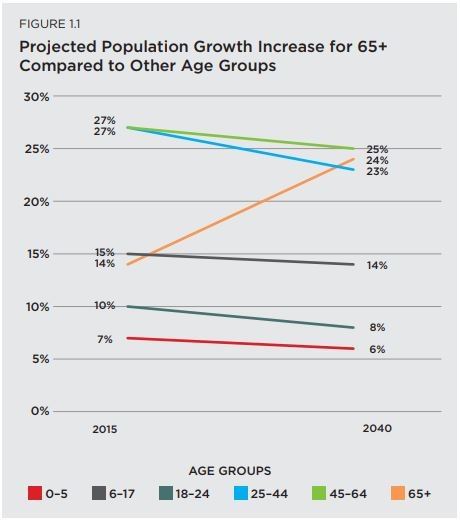
Orange County, California is home to nearly 3.2 million residents and home to 457,031 (14.3%) older adults (ages 65 years and older).1 By the year 2045, the number of older adults is projected to increase to 17.3%.2
This population will continue to increase at a rapid pace, while all the other age group populations will decrease.
Source: Orange County Healthy Aging Initiative. (2016). Orange County Older Adult Profile, 2016
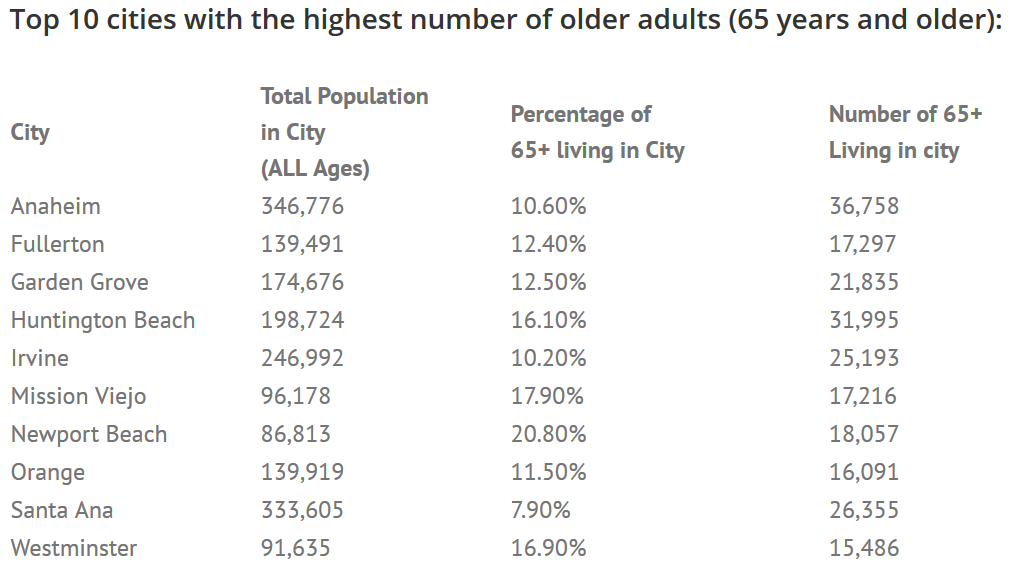
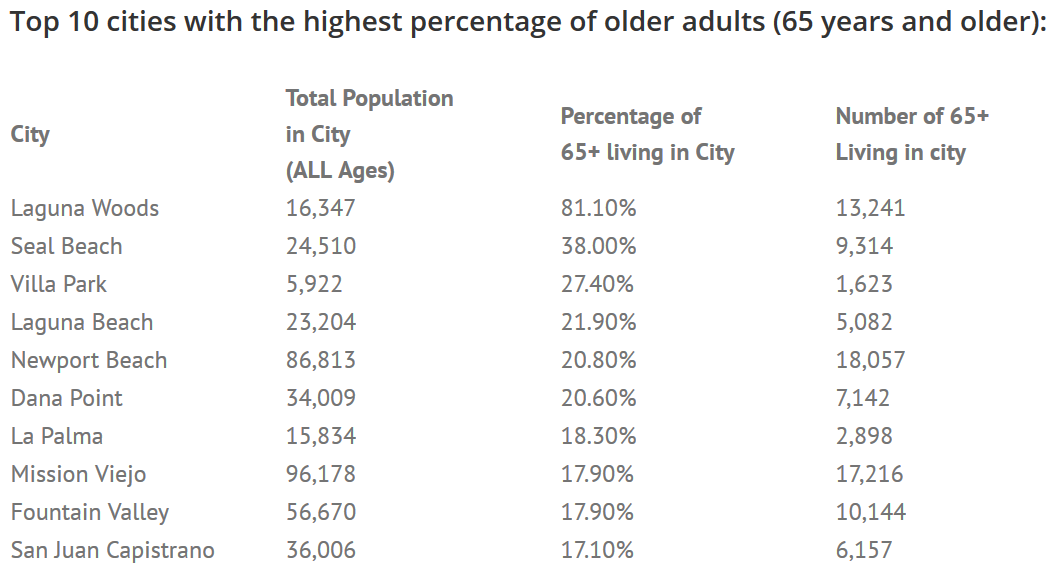
Source: Orange County Healthier Together. Orange County City Profiles, 2018
A Letter from the Chair
As any adult over 50 can tell you, our bodies change as we age. Perhaps reading glasses are called for, our hearing is strained at times, or flights of stairs are a bit more daunting than they used to be. Orange County is home to more than 450,000 people over the age of 65 and they will all face issues of aging. That portion of the population is growing at an exponential rate. As the only increasing demographic in the County, our older adult population presents us with unique opportunities and some challenges. We realize there is insufficient funding county-wide to support this population. Are we engaging this population on their interests in creating a community that supports them and their families? Are we planning for more walkable cities, more transportation choices? Does our health care system provide what is needed to keep people healthy and safe? It is abundantly clear that we as a community must do more for our seniors! There are many questions that need answering.
This report is our initial attempt to report the current information available to us, but we realize that this data is far from perfect. This is a starting place. As a community, we must collect more comprehensive data to inform our planning.
One thing has become crystal clear through our work at OCSPA: we must do more to provide and plan for our community members as they age. Greater coordination, funding, information sharing and collaboration will be required if we wish for Orange County to successfully support older adults. We all must do more for those who have helped to build Orange County into the community it is today.
Orange County faces the largest escalation of the Senior Population in its history. We must find creative ways to increase support for our seniors – together.

Jim McAleer, MPA
Food Insecurity and Nutrition
Food insecurity is the state of being without reliable access to a sufficient quantity of affordable nutritious food.3 A national study on food insecurity among older adults found that common consequences of food insecurity compromise one’s health. For example, older adults will make trade-offs between food and other basic necessities, purchase a low-cost diet that relies on energy-dense but nutrient-poor foods, or postpone preventive or needed medical care.4
In 2016-2017, nearly one third low-income older adults in Orange County were food insecure5, but less than 3% of those older adults are enrolled in CalFresh,3 a county-operated government entitlement program that provides food benefits to assist low-income households. This shows that many low- income older adults who may be eligible for, or in need of CalFresh benefits, do not receive them.
Food insecurity places older adults at a greater risk for malnutrition, which can increase hospitalizations and re-admittances, and raise individual and institutional costs. Research has shown that food insecurity is a strong predictor of higher health care utilization and increased costs.6 In 2016, California spent nearly $500 million on direct medical costs that were a result of older adult malnutrition, the highest of any other state.3 A health care provider survey found that many providers were not knowledgeable as to whom should be screened for food insecurity among older adult patients (52.4%), how they could intervene to address food security (46.5%), and how the Supplemental Nutrition Assistance Program (SNAP) worked (35.4%).6
Challenges in Food Security and Nutrition

What’s Working
Meet Susan
Susan is an 84-year-old woman who lives alone in her home. She is unsteady on her feet and her eyesight has become progressively worse. She can no longer go to the grocery store or prepare meals. On a limited fixed income, it can be difficult for Susan to buy healthy food.
Susan’s nephew helps as much as he can but travels a lot for work and is not usually available. When he is in town, he stocks up his aunt’s freezer with microwaveable frozen food. While processed and packaged meals are not the most nutritious, Susan’s nephew buys them because it is within her budget. Susan is grateful for her nephew’s help and doesn’t know if she would be able to stay in her own home without it.
On weeks that Susan’s nephew is out of town, she typically eats only once a day. She is forced to rely on unhealthy, processed food and is frequently hungry.
The most recent trip to the doctor was surprising for Susan. She was told that her blood pressure is higher than it has ever been. Susan’s doctor would like her to cut back on her frozen packaged meals, increase her intake of fruits and vegetables, and consume less processed food.
Susan is an ideal candidate for home delivered meals and the congregate lunch program at her local senior center. If she or her doctor were made aware of such programs, she could have benefitted early one from a more a reliable and consistent source of nutritious food.
Health

The primary cause of death and disability in older adults is chronic disease. According to National Institute on Aging, approximately 85% of older adults have one chronic disease, and 60% have two or more diseases.11 The economic cost to treat such diseases is staggering; it is estimated that almost $650 billion of the US healthcare budget is spent treating diabetes, heart disease and dementia alone.12 Unhealthy lifestyle habits, such as lack of physical activity, poor diet, and smoking can contribute to the development of these diseases. Lifestyle modifications, including: increased physical activity and a nutritious diet can help prevent chronic diseases, delay the progression of chronic conditions and prevent complications resulting from chronic diseases. Increased physical activity can also help to reduce the risk of cancer, hypertension, diabetes, heart disease, stroke, dementia, falls and death, and improve a person’s daily function and quality of life.
Common Medical Conditions/Issues
Unhealthy Behaviors
What’s Working
Meet Grace
Grace is a 61 year old middle school teacher who has lived in Orange County all of her life. On multiple occasions, Grace’s colleagues found her entering the wrong classroom and seemingly confused. They encouraged her to check in with her physician.
During her annual exam, Grace shared about her forgetful moments. Her doctor recommended further evaluation and encouraged her to take a memory screening. Grace felt she was “too young” to have dementia, but reluctantly took the tests her doctor suggested. To her surprise, Grace was diagnosed with early onset Alzheimer’s disease.
She was overwhelmed with emotion, concerned about the financial impact of an earlier than expected retirement, discouraged by the lack of treatment options, and confused about what her next steps should be.
On her last day of work, Grace stated, “My whole future is gone and life as I know it has ended.” Grace would greatly benefit from education about her diagnosis and information about available support services.
Elder Abuse
Elder abuse is an intentional act and more common most people think. Nationally, it is estimated that 10% of older adults have experienced some type of abuse.23 This has an economic cost of up to $36 billion dollars.23 Under California law, elder abuse can be considered both criminal and civil, taking on many forms resulting in physical and or emotional harm, deprivation or financial exploitation.24
Financial abuse is found to be the most common type of abuse in Orange County. As of 2007, financial institutions became mandated reporters to assist older adults who may be victimized.25 Locally, the Council on Aging-Southern California’s Senior Protection Program helps older adults avoid financial predators by providing educational seminars across the county.
In 2016/2017 Orange County’s Adult Protective Services responded to over 12,000 reports of abuse and/or neglect of individuals living in the community.26 During the same period, the Council on Aging’s Ombudsman Program investigated 983 complaints related to elder abuse of adults living in long-term care facilities.
What’s Working
Meet Nelson
Seven months into being home with Nelson, the daughter called 911 after finding him lying on the ground unconscious. When emergency personnel arrived to the home, Nelson appeared to be severely emaciated, and had deep, stage four bedsores on his backside. It appeared that Nelson might have been the victim of neglect, and possibly elder abuse.
Emergency personnel contacted APS, and an elder abuse case was opened on Nelson. After a thorough investigation by APS staff, it was determined that Nelson’s daughter had been neglecting and financially abusing him by cashing his pension checks, and living rent-free in the home without providing any of the home care services that he required. Following the investigation, the daughter admitted that she did not want to see her inheritance wasted on nursing home care for Nelson.
Social Isolation/Loneliness
Loneliness is described as the subjective feeling of isolation, not belonging, or lacking companionship.30 There are several reasons as to why this may occur, including; language barriers, immigration status, health conditions affecting mobility or cognition, depression and, lack of social support. These factors contribute to loneliness, which can lead to depression, self-neglect, and increased diagnoses of chronic conditions. Several studies have shown negative effects of loneliness and social isolation on mental health and overall wellbeing. Loneliness is a common source of suffering for older adults, and can lead to other major risk factors such as that may result in more serious health concerns, and possibly even early mortality.31
What’s Working

Meet Henry
The pastor of a community church launched a Friendly Visitor program and started reaching out to members of the community who had not been seen in a while. Henry was an 87-year-old longtime church member that had been widowed for a year, and had no children and/or relatives in the area. He suffered a minor stroke six months ago and could no longer drive. Members of the church had reached out to Henry to offer help, but he declined, and over time appeared more and more depressed. Eventually, Henry ended up accepting a visit from volunteers of a local Friendly Visitor’s program. During the visit, the volunteer noticed that Henry’s house was dark and cluttered, and that he received multiple calls throughout the day from solicitors.
Henry appeared to be very cordial to most of the solicitors that he spoke with, even offering them an opportunity to call him back later. During the visit, Henry admitted that he had not seen his doctor in months, and that the food in his refrigerator, which was minimal, all came from the local corner store.
Due to his social isolation, Henry was not able to attend medical appointments, church activities, or buy necessities such as food and toiletries from a grocery store. Furthermore, it appeared that because of his loneliness, he willingly placed himself at high risk for financial exploitation by welcoming phone calls from solicitors.
Housing
In 2018, 71.4% of CalOptima providers identified affordable housing as one of the top three most important factors for a healthy community.35 However, housing is not always readily available within Orange County, especially to those needing affordable housing options. This ultimately leads to a growing number of older homeless people on the streets.
Housing affordability is characterized by paying no more than 30% of income toward housing cost.36 Orange County’s median housing burden is 44 percent, well over the affordability standards.36 The cost of living in Orange County is among the highest in the state.37 For older adults on a fixed income, the growing cost of housing, medical, and other basic expenses present a challenge that is often followed with worsened physical and mental health.
Of 239,853 senior-occupied housing units, 75.9% are owner-occupied and 24.1% are renter-occupied.38
Housing Availability
Between the four Public Housing Authorities in OC (County of Orange, Cities of Anaheim, Santa Ana, and Garden Grove), there are 89,736 people on the waitlist for 22,187 Section 8 vouchers.37 New home and rental units under construction are only at 16.6% and 44% of total demand, respectively.39 The Regional Housing Needs Allocations (RHNA) is a metric, which uses projected population growth to estimate how many new units are required to meet housing and affordability needs. Only 55.7% of the Orange County RHNA was met between 2003 and 2014.36

Older Adult Homelessness
In 2015, the median age of the homeless population within Orange County was 50 years, which is higher than the county median age of 37.8, indicating an aging trend in homelessness in the county.40 Currently, older adults make up about 7.1% of the homeless population, and the majority of this group is disabled (81.9%) (2018 CES Point-in-Time Count).
What’s Working
Meet Doug
Doug, 71 years old, moved to Orange County from the East Coast in 1983 to be closer to his wife’s aging parents. He worked for the same company for nearly 30 years but was laid off before his planned retirement. Shortly after the layoff, Doug and his wife sold their home, one of their two cars, and moved into an apartment. For the last few years, they have been going through their savings at a much faster rate than anticipated.
As medical costs and rent continue to increase, Doug made the decision to look for part-time work. He experienced difficulty finding a job because of perceived limitations due to his age.
Recently, Doug and his wife decided to move into a smaller apartment in a neighborhood that is more affordable for them. However, even with the move, more than 48% of their income continues to go toward housing costs, leaving them with just enough income to afford necessities. It is unlikely that Doug and his wife will be able to stay in their current apartment if rent continues to increase as quickly as trends predict in Orange County. They are currently on the waitlist to obtain Section 8 vouchers.
Technology

Research shows that the use of technology varies among different segments of the older adult population; younger, educated older adults with higher income are much more likely to own or use technology compared to their counterparts.41 When comparing younger older adults (age 65-69) with those 80 years and older, younger older adults are twice as likely to go online and have broadband at home and four times as likely to own smartphones.42
Data show that each technological device/equipment is used differently among older adults: computers are for more practical tasks, tablets for entertainment, and smartphones for social and on-the-go activities. Younger older adults are more likely to use computers to engage in online learning activities or manage medical care compared to older adults age 70 and older.41
Promising Technological Applications
Strategic uses of technology could provide great benefit to older adults and their support systems. Telehealth technologies like virtual visits, remote patient monitoring (RPM), and tele-messaging can improve access to and quality of care for patients, reduce strain on caregivers, and provide coordinated care with a wide range of services. When applied thoughtfully, technology can have a positive impact on social determinants of health as well; in Orange County, older adults use technology to access food resources, arrange transportation, and join online sites that mitigate social isolation.
Adoption of Technology
The benefits of technology cannot be obtained without adoption by older adults. Factors that prevent adoption include physical challenges, skeptical attitudes, internet connectivity, and difficulty learning about a new device.44 While technology has helped many access resources and information, it is important to continue investing in alternative approaches to the current generation of older adults.
Progress to Date
IrisOC, a local digital platform was created to become a community resource hub and provide connections within the senior community online, in person and in the community. The beta website of IrisOC was launched in October 2018.
Meet Art
Art is a 91-year-old widower who lives alone in his home. Art, for the most part, is in good health, with the exception of having diabetes and neuropathy. He enjoys connecting with people, and typically uses his house phone to do most of his communication. Over the years, Art’s hearing has greatly diminished, causing him to struggle a bit with talking on the telephone. Since giving up his driver’s license last year, Art has relied heavily on his family to take him to the bank twice a month, as well as to other various appointments. He feels lucky to have so much help, but the loss of independence and ability to connect with others depresses him.
Art’s granddaughter recently gave him her old laptop that still works and is in great condition. She explained to him that he could use the computer to access his banking accounts, shopping, connect with family that live out-of-state, and even play games, including video poker (as favorite pastime of Art’s). While Art appreciates his granddaughter’s gesture, he is not confident that he will be able to learn how to use the laptop in the ways that she would want him to. He doubts his ability to use new technology, and often states that – “It’s a young folk’s world and I feel a little left behind.”
Transportation
As the older adult population grows in Orange County, there are more adults who are unable to drive themselves to medical appointments, run errands, or visit loved ones. Nationally, more than 6,000,000 people aged 70 or older stop driving each year and become dependent on others to meet their transportation needs.45 By estimating the equivalent proportion for Orange County, that figure is about 5,876 locally. Men typically outlive their driving days by 7 years and women by 10 years.45 Compared with older drivers, older non-drivers in the United States make 15% fewer trips to the doctor, 59% fewer shopping and restaurant trips, and 65% fewer trips for social, family and religious activities.45 Transportation is the top service request for the Office on Aging Information and Assistance Call Center for FY 17/18.46
Local Input
In a survey of 17 cities and 32 transportation programs, funding for additional drivers and vehicles was identified as a top challenge to accommodating growing demand.47

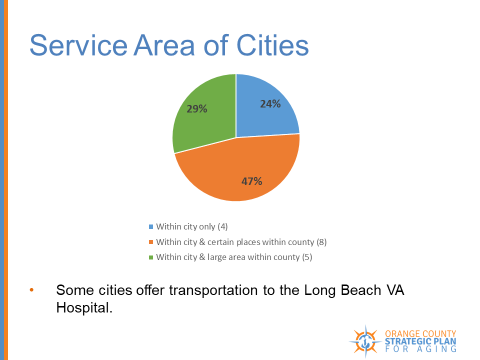
What’s Working in Orange County
Publicly funded senior transportation in Orange County is provided through collaboration between the Orange County Transportation Authority (OCTA), the Health Care Agency (HCA), the Office on Aging, cities, and a network of contracted service providers. These programs include the Senior Mobility Program (SMP), the Senior Non-Emergency Medical Transportation Program (SNEMT), and the Nutrition Transportation Program.
OC ACCESS is a shared-ride service that is available to qualified participants whose physical or cognitive limitations prevent them from using the regular OC Bus fixed-route service. The base fair for ACCESS service is $3.60 per passenger for each one-way trip. The majority of local programs receive funding from OC Go (also known as Measure M2), but the available transportation services and capacity of these programs often vary significantly from city to city. Thus, the transportation options for an older adult with a limited income who no longer drives depends upon whether they live in an ACCESS-service area, and if they qualify for the transportation services their city provides.
In March 2018, The Orange County Referral Guide for Older Roadway Users was released. It contains resources to assist older drivers and their family members with questions and concerns related to safe driving, as well as transportation alternatives. Knowledge of, and the ability to navigate, existing programs is lacking among older adults, their families and caregivers.
211RIDE is a free online resource tool, accessible via desktop, mobile, or kiosk, that helps users find available services to meet their transportation needs. 211RIDE assists with facilitating travel in and between Orange, Los Angeles, Riverside, and San Bernardino Counties, and is available in English, Spanish, Vietnamese, Farsi, and Dari.51
Meet Jean
Jean is an 83 year old retired elementary school teacher who has lived in Orange County since 1943. For the last 18 years, she has been volunteering in the children’s reading room at her local library. Jean says, “Sharing my passion for reading and the magic of books with the little ones keeps me young. We use our imaginations together and we travel to far off places when we read”. The children look forward to “Jean Days” and the staff appreciates her dedication to the library and the families they serve.
As city streets get busier and busier, Jean is less confident driving. She recognizes that her strength and reaction time just aren’t what they used to be. There are have many “close calls” and Jeans feels her driving days are coming to an end.
Jean’s daughter lives locally and is able to take her to medical appointments, but works full-time and is limited during the day. Jean is certain her daughter and neighbors will be able to take her to all necessary appointments and weekly shopping, but does not want to burden anyone with any additional activities. The library is not within walking distance, so she will likely give up the volunteer work. Jean is aware that there are transportation services available, but does not know what she will be able to afford.
Overall Recommendations
This report details steps that will lay the groundwork to support older adults in Orange County. To truly address the issues faced by seniors and their growing numbers, OCSPA recommends the following:
OCSPA has taken the first step to acknowledge the changing age demographic shift the county will be experiencing in the coming years. We hope this report becomes a resourceful tool that encourages the community to start having conversations and planning for the future with older adults in mind. OCSPA will continue to focus on local efforts to address the unmet needs in each of the areas mentioned above, and have established a second set of 18-month goals to further advance our vision, but we realize that we cannot do this alone. This report has provided the community with an increased understanding and awareness of the current and future state of our older adult population. We must come together to support our older adults so they can continue enjoy living vibrant and fulfilling lives in Orange County.
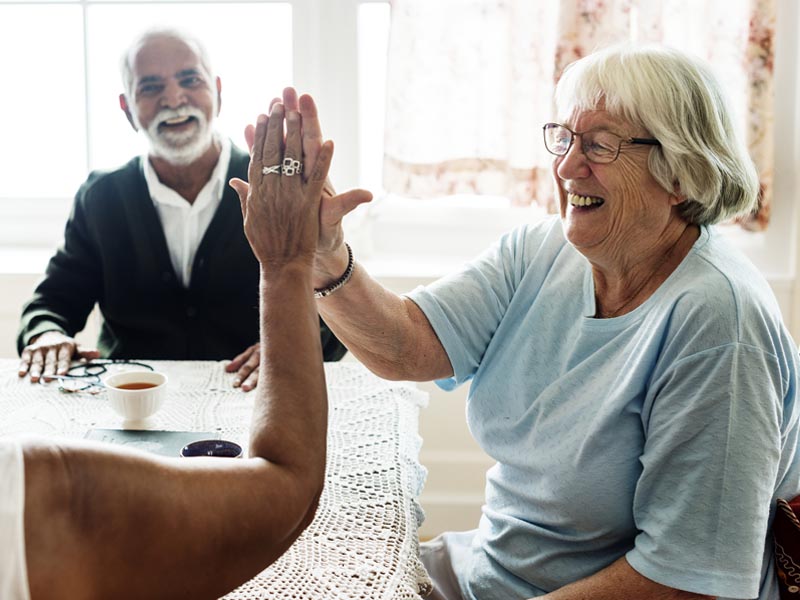
Thank you to our generous funders for helping to make this report possible
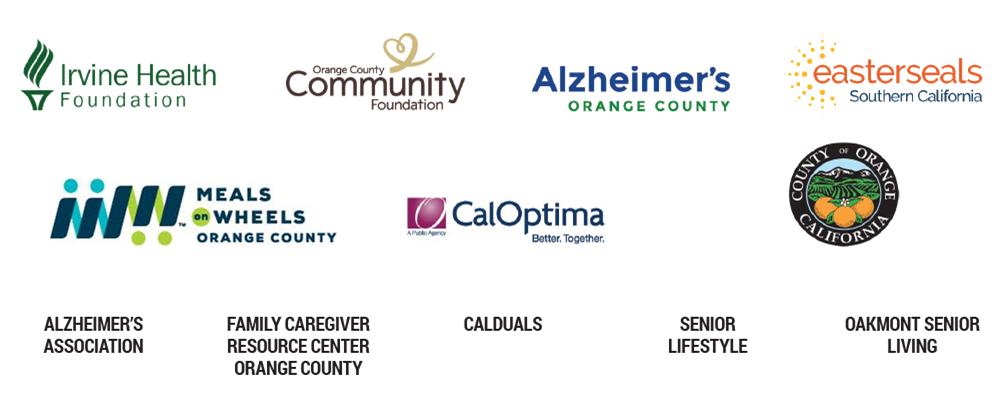
Citations
1United States Census Bureau. (n.d.). U.S. Census Bureau Quick Facts: Orange County, California. Retrieved from https://www.census.gov/quickfacts/orangecountycalifornia
2Demographic Research Unit, California Department of Finance. (2018). County Population Projections (2010-2060).
3Advancing Policies for Quality Malnutrition Care in Older Adults. (2017, June). Retrieved from http://defeatmalnutrition.today/
2017 Malnutrition Legislative Toolkit
4Berkowitz, S. A., MD, MPH. (2017, August 18). Food Insecurity, Malnutrition, and the Health of Older Adults: Testimony for the U.S. Senate Special Committee on Aging. Retrieved from http://www.frac.org/blog/food-insecurity-malnutrition-health-older-adults-testimony-u-s-senate-special-committee-aging
5California Health Interview Survey(Rep.). (2017). Retrieved from https://healthpolicy.ucla.edu/Pages/home.aspx.
6Ziliak, J. P., Ph.D., Gundersen, C., Ph.D., & Haist, M., Ph.D. (2008). The Causes, Consequences, and Future of Senior Hunger in America(Rep.).
7Lloyd, J. L., & Wellman, N. S. (2015). Older Americans Act Nutrition Programs: A Community-Based Nutrition Program Helping Older Adults Remain at Home. Journal of Nutrition in Gerontology and Geriatrics,34(2), 90-109. doi:10.1080/21551197.2015.1031592
8SeniorServ. (2019). About. Retrieved from https://www.seniorserv.org/about/.
9Meals on Wheels America. (2018). Delivering so much more than just a meal fact sheet. Retrieved from https://www.mealsonwheelsamerica.org/docs/default-source/fact-sheets/2018/2018-national/what-we-deliver_2018-fact-sheets_forpublication.pdf?sfvrsn=1410bc3b_2
10OC Social Services Agency. (n.d.) About the Restaurant Meals Program. Frequently Asked Questions. Retrieved from http://ssa.ocgov.com/calfresh/calfresh/rmp_recipient_info.
11Supporting Older Patients with Chronic Conditions. (2017, May 17). Retrieved from https://www.nia.nih.gov/health/supporting-older-patients-chronic-conditions
12National Center for Chronic Disease Prevention and Health Promotion (NCCDPHP). (2018, October 23). Retrieved from https://www.cdc.gov/chronicdisease/about/costs/index.htm
13Orange County Healthy Aging Initiative (2018). OC Older Adult Dashboard: Leading Cause of Death among adult 65+: Alzheimer’s Disease. Retrieved from http://www.ochealthiertogether.org/indicators/index/view?indicatorId=4417&localeId=267.
14National Center for Health Statistics. (2017, March 17). Retrieved from https://www.cdc.gov/nchs/fastats/leading-causes-of-death.htm
15Orange County Healthy Aging Initiative (2018). OC Older Adult Dashboard: Alzheimer’s Disease and Dementia Prevalence: 65+. Retrieved from http://www.ochealthiertogether.org/indicators/index/view?indicatorId=4169&localeId=267
16Orange County Healthy Aging Initiative (2018). OC Older Adult Dashboard: ER Rate due to Falls: Adults 65+. Retrieved from http://www.ochealthiertogether.org/indicators/index/view?indicatorId=5005&localeId=267
17Orange County Healthy Aging Initiative (2018). OC Older Adult Dashboard: Adults 65+ with a disability. Retrieved from http://www.ochealthiertogether.org/indicators/index/view?indicatorId=4307&localeId=267.
18ADA National Network. (2019). Glossary of ADA Terms. Retrieved from https://adata.org/glossary-terms#D.
19Orange County Healthy Aging Initiative (2018). OC Older Adult Dashboard: Adults 65+ who are obese. Retrieved from http://www.ochealthiertogether.org/indicators/index/view?indicatorId=4613&localeId=267.
20California Health Interview Survey(Rep.). (2017). Retrieved from https://healthpolicy.ucla.edu/Pages/home.aspx.
21CalOptima. (2019). Fast facts: February 2019. Retrieved from https://www.caloptima.org/~/media/Files/CalOptimaOrg/508/NewsandPublications/2019/2019-02_FastFacts_508.ashx.
22CalOptima. (n.d.). About us. Retrieved from https://www.caloptima.org/en/AboutUs.aspx
23National Council on Aging. (n.d.). Elder abuse facts. Retrieved from https://www.ncoa.org/public-policy-action/elder-justice/elder-abuse-facts/.
24California Advocates for Nursing Home Reform. (2019). Recognizing and reporting elder abuse. Retrieved from http://www.canhr.org/factsheets/abuse_fs/html/fs_elderabuse.htm.
25Orange County Social Services Agency. (n.d.). Elder/disabled abuse. Retrieved from http://ssa.ocgov.com/abuse/elder.
26Orange County Social Services Agency. (2018). County of Orange Social Services Agency Annual Report Fiscal Year 2016-17. Retrieved from http://ssa.ocgov.com/civicax/filebank/blobdload.aspx?BlobID=71785.
27Cooper, C., Selwood, A., Blanchard, M., Walker, Z., Blizard, R., & Livingston, G. (2009). Abuse of people with dementia by family carers: representative cross sectional survey. British Medical Journal,338(2994), 583-586.
28Administration for Community Living Aging Integrated Database. (2018). LTC Ombudsman National and State Data. Retrieved from https://acl.gov/programs/long-term-care-ombudsman/ltc-ombudsman-national-and-state-data.
29Orange County Social Services Agency. (2018). Adult Protective Services Fact Sheet 2018.
30Perissinotto, C. M., Cenzer, I. S., & Covinsky, K. E. (2012). Loneliness in Older Persons. Archives of Internal Medicine,172(14). doi:10.1001/archinternmed.2012.1993
31Flowers, L., Houser, A., Noel-Miller, C., Shaw, J., Bhattacharya, J., Schoemaker, L., & Farid, M. (2017). Medicare Spends More on Socially Isolated Older Adults. doi:10.26419/ppi.00016.001
32Orange County Healthy Aging Initiative. (2016). Orange County Older Adult Profile, 2016.
33Frank, D. (2018, July 03). Social Isolation: Symptoms, Prevention, Treatments. Retrieved from https://www.aarp.org/health/conditions-treatments/info-2018/social-isolation-symptoms-danger.html
34Theeke, L. A., & Mallow, J. (2013). Loneliness and quality of life in chronically ill rural older adults. The American journal of nursing, 113(9), 28–38. doi:10.1097/01.NAJ.0000434169.53750.14
35CalOptima Member Health Needs Assessment: Provider Survey Results (2018). Retrieved from https://www.caloptima.org/~/media/Files/CalOptimaOrg/508/Community/CommunityGrants/2018_MHNAProvider_508.ashx
36California’s Housing Future: Challenges and Opportunities: Final Statewide Housing Assessment 2025(Rep.). (2018). Sacramento, CA: California Department of Housing and Community Development.
37Price, S. (2016). An Assessment of Homeless Services in Orange County(Rep.). CA: County of Orange.
38U.S. Census Bureau QuickFacts: Orange County, California. (n.d.). Retrieved from https://www.census.gov/quickfacts/orangecountycalifornia
39Comprehensive Housing Market Analysis: Anaheim-Santa Ana, Irvine, California(Rep.). (2017, June 1). Retrieved https://www.huduser.gov/portal/publications/pdf/AnaheimCA-comp-17.pdf
40Homelessness in Orange County: The Costs to our Community(Rep.). (2017, June). Retrieved https://www.unitedwayoc.org/community-partners/community-resources-and-data/
41Anderson, G. O. (2017, December). Technology Use and Attitudes Among Mid-Life and Older Americans (age 50 )(Rep.). Retrieved https://www.aarp.org/content/dam/aarp/research/surveys_statistics/technology/info-2018/atom-nov-2017-tech-module.doi.10.26419/res.00210.001.pdf
42Anderson, M. (2017, December 08). Tech Adoption Climbs Among Older Americans. Retrieved from http://www.pewinternet.org/2017/05/17/tech-adoption-climbs-among-older-adults/
43Quinn, W. V., O’Brien, E., Springan, G., AARP, Marcella Niehoff School of Nursing, Loyola University, & Epic Systems Corporation. (2018, May 14). Using Telehealth to Improve Home-Based Care for Older Adults and Family Caregivers. Retrieved from https://www.aarp.org/ppi/info-2018/using-telehealth-to-improve-home-based-care-for-older-adults-and-family-caregivers.html
44Smith, A. (n.d.). Older Adults and Technology Use(Rep.). Pew Research Center.
45Preserving the Mobility and Safety of Older Americans(Rep.). (2018, March). Retrieved http://www.tripnet.org/docs/Older_Americans_Mobility_TRIP_Report_2018.pdf
46Thierry, N. (February 11, 2019) Personal Communication.
47(2018). Orange County Strategic Plan for Aging Transportation Survey (X. Tran, Interviewer)
48OC Area Plan for Fiscal Years 2016-2020(Rep.). (2016). Retrieved http://www.officeonaging.ocgov.com/resources/reports
49Orange County Transportation Authority. (n.d.). Retrieved from https://www.octa.net/Getting-Around/Bus/Access-Service/Overview/
50OCTA. (2018) Senior Mobility Program. Retrieved from http://octa.net/pdf/smp_facts.pdf?n=201810.
512-1-1 RIDE. (n.d.). Retrieved from http://www.211ride.org/
Acknowledgements
We are deeply grateful to the members of the OCSPA Leadership Council whose dues fund the operations of OCSPA. Their insights and direction have brought us into our second strategic planning process and have informed this report in many ways. We are truly grateful for our generous report sponsors, Orange County Community Foundation, Irvine Health Foundation, Alzheimer’s Orange County, Meals on Wheels Orange County, and Easterseals Southern California for helping us move forward with our vision because without them, this project would not have been possible. Special thanks to our report creation and design partners, Jim McAleer, MPA, CEO, Alzheimer’s Orange County, Chair, OC Strategic Plan for Aging; Lisa Gibbs, MD, Chief of UC Irvine Health’s Division of Geriatric Medicine and Gerontology; Cherie Fowler, MSW, ACSW, Project Case Manager at UC Irvine Health’s Division of Geriatric Medicine and Gerontology; Debbie Rose, PhD, Director of Center for Successful Aging at CSU Fullerton; Helene Calvet, MD; Christine Chow, MSG; Xuan Tran, MPH; Cynthia Okialda, MSG; and Kristen Maahs-Kolberg, who all have contributed countless hours toward shining a light on aging within Orange County, and the need for greater coordination, funding, information sharing, and increased collaboration.
To learn more about both programs, please visit:
www.ocagingplan.org
www.ocagingservicescollaborative.org
Orange County Aging Plan
The Orange County Strategic Plan for Aging (OCSPA) is a county-wide initiative created by Orange County’s community leaders to develop a short- and long- term strategic plan to prepare for the County’s unheralded rapidly growing older adult population. Launched in 2016, OCSPA was developed with the vision to ensure that Orange County’s older adults have every opportunity to thrive and remain independent for as long as possible while ‘aging in place’. For the first time, OC’s older population will grow while all other age groups’ rate of growth diminishes. The landscape will change as older adults become an even larger segment of consumers, voters, and citizens with experience and wisdom. As they continue to help shape this county, we have an obligation to ensure they have the resources and services to age with health, safety and happiness. Our goal is to analyze the county’s data currently available on older adults, review existing resources, address areas of need/concern, and explore innovative ways to bridge any gaps in available resources.
Over 60 entities including non-profits, community organizations, academic institutions and county agencies have come together to collaborate on this project. OCSPA formed subcommittees with specific objectives and in its first set of 18 month goals, OCSPA met or exceeded all goals including; reducing food insecurity for 1000 seniors, creating a transportation resource guide, bringing together all countywide visiting volunteers and more. The team is now embarking on its second set of 18 month goals.
Orange County Aging Services Collaborative
The Orange County Aging Services Collaborative (OCASC), host to OCSPA, is a group of 35 non-profit, county, and academic entities committed to work collaboratively by providing services and support to older adult and family caregivers. Established in 2009, OCASC focuses on advocating and educating the community and its members on behalf of OC older adults so they may live and thrive while aging in place in Orange County.
To learn more about OCSPA and OCASC, visit:
www.ocagingplan.org
www.ocagingservicescollaborative.org
